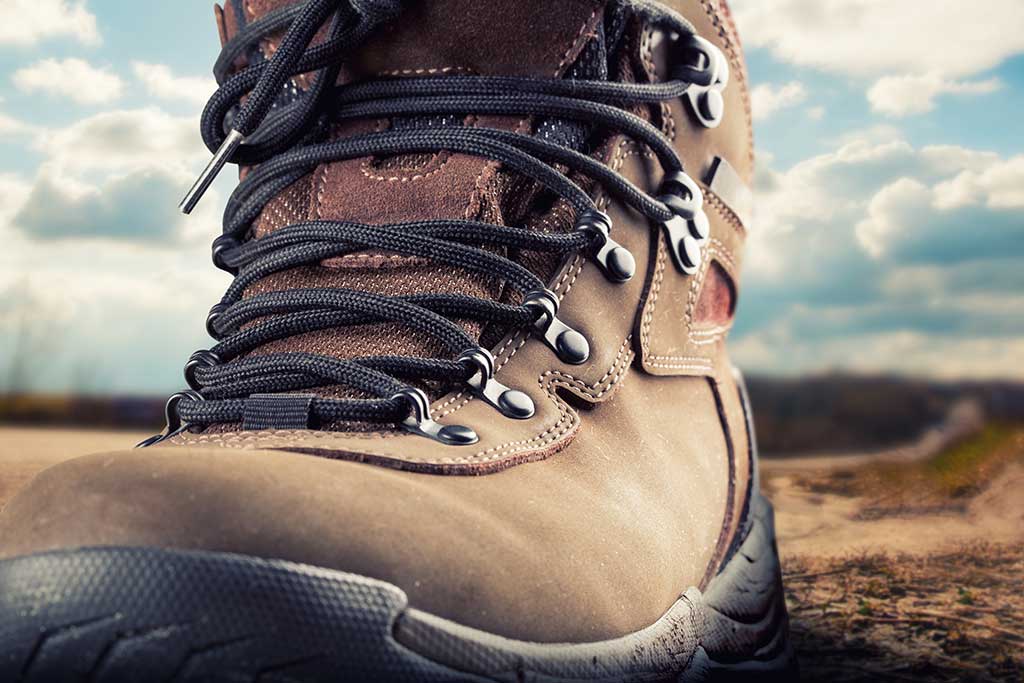What consequences does an inappropriate lace length have on comfort and safety?

Did you know that the length of your shoelaces can affect both your comfort and your safety? That's right, choosing the wrong laces can have unsuspected impacts, ranging from simple discomfort to far more serious risks. In this article, we'll explore together the consequences of incorrect shoelace length. We'll start by looking at the effects on comfort, such as the pressure and tension that improper lacing puts on your feet, or the risks of chafing and irritation. Next, we'll look at the safety implications, including the risk of falls and accidents, as well as the impact this can have on your physical performance.
Finally, we'll guide you through the essential precautions to take, such as choosing the right lace length and proper lacing techniques, to ensure optimal comfort and enhanced safety. Get ready to discover how a simple detail can make all the difference!

Impact on comfort
The choice of the length of your laces may seem trivial, but it plays a crucial role in your everyday comfort. Imagine walking around all day with laces that are too short, compressing your feet, or, conversely, too long and loose, creating a constant mess. This can quickly turn into a nightmare. Inappropriate length puts excessive pressure on certain areas of the foot, causing strain on muscles and joints.
Pressure and tension on the foot
Laces that are too short force you to pull harder to tie your shoes, which can lead to painful compression of the foot. Athletes in particular will feel this discomfort when performing: a simple run becomes painful when each stride is accompanied by a stabbing pain. On the other hand, laces that are too long can loosen easily, forcing you to tighten them constantly and thus disrupting your concentration.
Risk of chafing and irritation
Improperly adjusted laces also lead to excessive rubbing against the skin, causing irritation or even blisters. These little injuries may seem insignificant, but they quickly turn wearing shoes into a real ordeal. For women already suffering from discomforts linked to their physical condition or certain pathologies such as endometriosis - where tight clothing is already a problem - adding foot pain is simply unbearable.
Let's take the concrete example of an active parent running after his or her children, or a professional on his or her feet all day long: having well-fitting laces not only helps prevent these inconveniences, but also helps maintain correct posture and avoid lower back pain. Isn't it reassuring to know that something as simple as the right choice of laces can significantly improve your everyday life?
Safety implications
Risk of falls and accidents
A shoelace that's too long or too short can turn a simple walk into a real obstacle course. Imagine walking with your shoelaces hanging out, ready to get caught in any obstacle you come across. The risk of stumbling is then multiplied, considerably increasing the chances of falls and accidents. Similarly, a too short lace prevents proper tightening, making the shoe unstable and liable to slip at any moment. As a result, you find yourself constantly on the alert, attentive to every step you take.
Impact on physical performance
All athletes are well aware of the crucial importance of proper shoe fit in optimizing their performance. An inappropriate lace can compromise this quest for excellence. For example, during a run, an ill-fitting lace can cause subtle but significant imbalances, affecting your stride and speed. For professional athletes and passionate amateurs alike, these details can make all the difference between a stunning victory and a bitter defeat.
Let's take the example of hikers: with ill-fitting laces, every step becomes a struggle against uneven terrain. Descents become perilous and demanding climbs turn into formidable tests. An ill-fitting shoe with poor lacing can cause sprains or muscle injuries that could have been avoided with a simple, correct fit.
Precautions to take
How to choose the right lace length
Choosing the right length of your laces may seem trivial, but it's of paramount importance for your comfort and safety. Imagine walking with laces that are too short, compressing your feet, or too long, dragging on the ground and causing you to trip. To avoid these inconveniences, it's essential to consider several factors before buying your laces.
First, measure the length of current laces you find comfortable. If you don't have a reference, use a tape measure to measure the distance between the eyelets on your shoes. As a rule of thumb:
- For classic low shoes: 60 to 75 cm
- For sneakers or sneakers: 90 to 120 cm
- For ankle boots or high-top shoes: 150 cm and more
The thickness of the lace also plays a decisive role. A thick lace requires a slightly longer length to enable comfortable tying without exerting excessive pressure on the foot.
Adapted lacing techniques
Knowing how to choose the right length isn't enough; you also need to master lacing techniques adapted to each type of activity and foot morphology. For example, classic cross lacing is perfect for everyday activities, while loop lacing is ideal for athletes looking for optimum support without pressure points.
Have you ever heard of parallel lacing? This technique reduces lateral friction and is particularly recommended for those suffering from frequent chafing. Similarly, ladder lacing can offer a customized fit for those with wide or narrow feet.
Here are some lacing techniques:
- Cross lacing: suitable for everyday activities, easy to achieve.
- Parallel lacing: ideal for minimizing side rubbing.
- Loop lacing: offers optimum support, perfect for athletes.
- Ladder lacing: allows a customized fit according to foot width.
Don't forget that the correct use of lacing techniques can not only improve your comfort but also extend the life of your shoes. Which technique will you try today? Take care to adapt your choices to your specific needs to avoid any discomfort and thus maximize your daily well-being.
We recommend these other pages:
